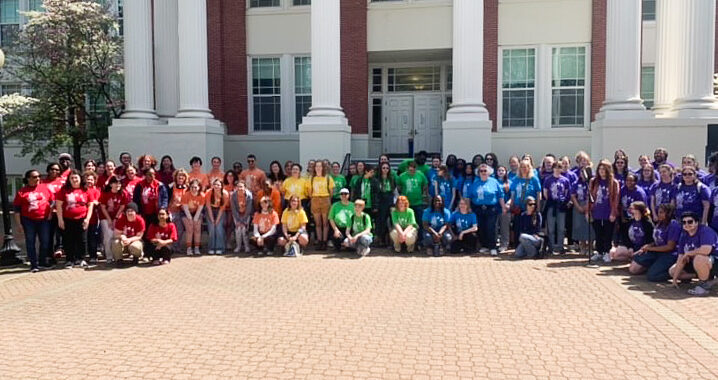Nine Possible Flu Cases
3 min readBy HEATHER BRADY
On alert for swine flu, the Health Center has reported nine cases of influenza-like illness on the Mary Washington campus as of Tuesday evening.
According to Thomas Riley, university physician and director of the Health Center, the number rose to nine students overnight from seven students on Monday, and the Health Center is expecting to see more cases soon.
Riley said that the state does not do definite testing for swine flu cases, because negative test results are not always accurate. A positive test confirms the flu diagnosis, but a negative test does not disprove it. Instead, students are simply diagnosed with influenza-like illness (ILI) if they show symptoms of the flu.
“The epidemiology studies at this time show that it is 97 percent likely that someone with these symptoms has H1N1 flu,” Riley said.
“UMW is working on the appropriate response to the swine flu,” he continued. “We don’t know if this will be a non-event like the 1976 swine flu, or an emergency like the 1918-1919 ‘Spanish’ Flu, also an H1N1 flu. We are preparing for both extremes.”
According to Riley, the University has a comprehensive Pandemic Response Plan in place to address the situation, with three possible action levels that depend on the severity of the spread of the disease. He said that the plan covers all departments of the University, and also uses assistance from and coordination with state and local resources.
Most experts are expecting a high number of students to get the virus, according to Riley.
“Since the virus is a new strain, young people have not been exposed to it before, and do not have natural immunity,” Riley said.
However, he emphasized that the concern lies not in the number of students that get the virus.
“The question is the severity of the illness,” Riley said. “So far, this has been moderate.”
According to an Associated Press article forwarded through the Virginia Department of Health, the H1N1 virus will not combine with other strains of the flu virus that it encounters to create a stronger strain.
“University of Maryland researchers deliberately co-infected ferrets to examine one of the worst fears about the new swine flu,” the article said. “But fortunately, the flu didn’t mutate…The animals who caught both kinds of flu, however, had worse symptoms. And they easily spread the new swine flu, what scientists formally call the 2009 H1N1 virus, to their uninfected ferret neighbors, but didn’t spread regular winter flu strains nearly as easily.”
New research shows, Riley said, that students had the greatest chance of contracting the swine flu strain over other strains.
“Recent studies have shown that if you get both the seasonal flu and the 2009 H1N1 flu at the same time, you will only become sick with the 2009 H1N1 flu,” he added.
Students on college campuses like Mary Washington are at an increased risk of getting the virus, according to Riley.
“Living in a residential hall with close exposure to more people is a risk compared to living at home,” Riley said. “With frequent use of the dining hall, class rooms, fitness center and public bathrooms, you are more likely to touch surfaces touched by others.”
There are several suggestions Riley had for avoiding the flu, including avoidance of ill persons and of sharing food, drinks, water bottles and utensils. He also emphasized the use of alcohol-based hand gel and soap in preventing the flu.
“Wash your hands often,” Riley said.











